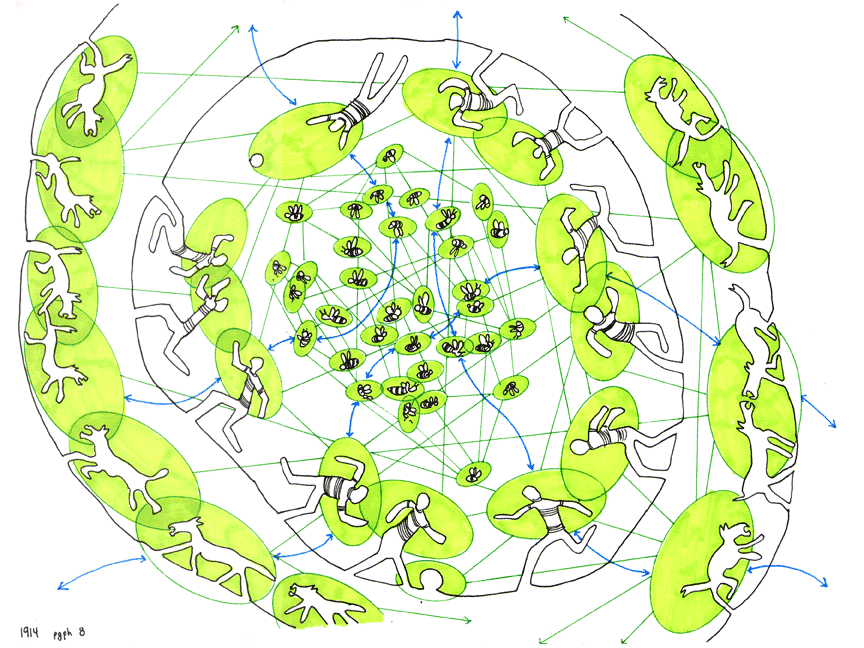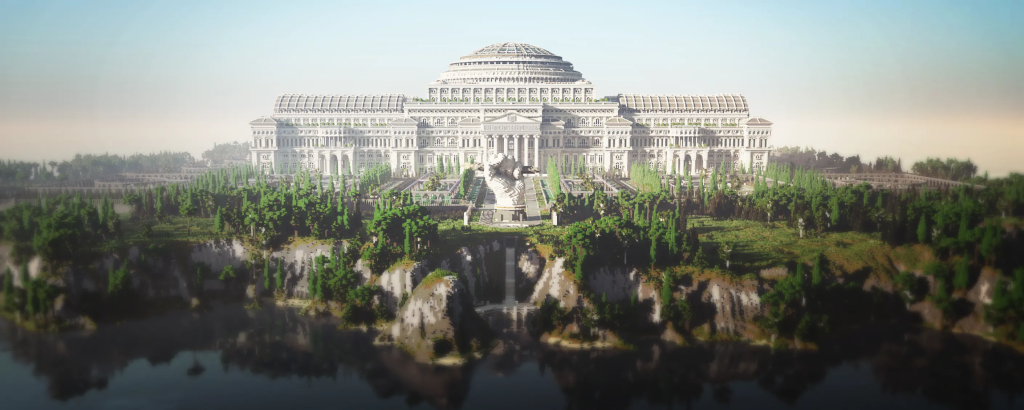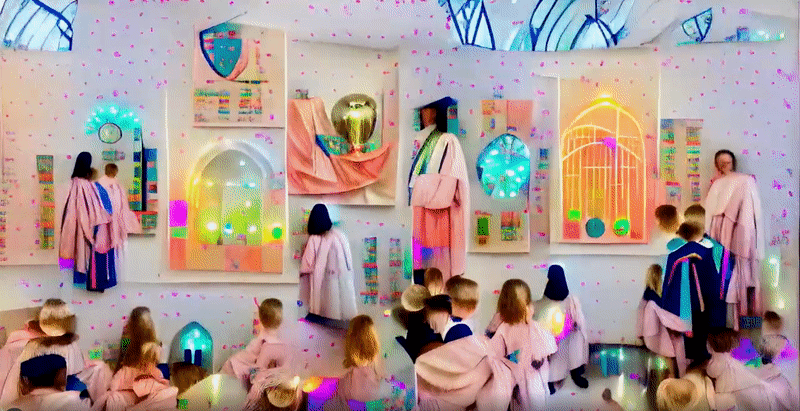After spending 2 years working on Zora, I came to understand how different our approach is. This difference comes from a fundamentally new mental model of what is possible (and is already happening) with crypto protocols.
The nature of crypto protocols opens up radically expanded new models for building invaluable public infrastructure. This view is so different that I think it needs to be reformulated.
In this essay, I describe the concept of hyperstructures: what they are, how they work, and why they will be the backbone of the internet for decades to come.

Definition
hyperstructure — cryptoprotocols that can work for free and forever, without maintenance, interruptions and intermediaries.
Blockchains have given rise to a new type of infrastructure called “Hyperstructures”.
Hyperstructures take shape protocolsthat run on the blockchain. Something can be considered a hyperstructure if it has the following characteristics:
- Unstoppable: the protocol cannot be stopped by anyone. It works as long as the underlying blockchain exists.
- Free: the commission for using the protocol is 0% and works exactly on the cost of gas.
- Value: accumulates value that is available and can be realized by the owners.
- Expansiveness: there are built-in incentives for protocol participants.
- Publicity: universal access and resistance to censorship. Developers and users cannot be removed from the platform (deplatformed).
- Positive result: a win-win environment is created for participants using the same infrastructure.
- Reliable Neutrality: protocol is user independent.
It should be noted that if the application protocol based, this does not mean that it is a hyperstructure. For example, the protocol Wyvern, which (among others) is used open sea, cannot work without off-chain orders stored in a private database. This means that if open sea or any other platform built on top of it falls, the market falls with it. This is also true for a platform like Coinbase: it facilitates the exchange of cryptocurrencies, but if it falls, then their market falls with it. A more subtle example: if you see full-fledged An on-chain protocol with the ability for administrators to completely update and change protocol rules is not a Hyperstructure, it is also a platform. This is not to say that any of these examples are inherently bad, just that they are not Hyperstructures.
Hyperstructures are 100% on-chain and public goods, which create a positive-sum ecosystem for all participants. Below I will elaborate on each of the main characteristics of the Hyperstructure.
unstoppable

Ripples, by Mashin Hero Wataru
Traditional infrastructure, such as power grids and social media platforms, requires a trusted intermediary to maintain and operate it—without it, the infrastructure will degrade and/or stop working altogether. Those, who will serve her These are organizations that are privately owned or controlled by the state. And to serve their purpose over time, they need both profits and labor and/or subsidies.
Thanks to Hyperstructures run on the blockchain, they can run foreverand it's impossible to stop them. They can run continuously without maintainer or operator, and they can work as long as the main blockchain works - and this can be at least a decade. Hyperstructures are unstoppable, and this is a superpower that we have not yet had examples of. You can pay the cost of creation once, it will work exactly as it was intended, without degradation. To support the Hyperstructure in the future, neither labor nor capital will be required. If the main command or platform built on top of the hyperstructure were to disappear, it would operate exactly as intended and be fully operational for decades to come. unstoppable - this is new potential made possible by blockchains, and this is the potential that I think is changing the economic nature of infrastructure.
If we reduce the scale of abstraction by one level, then the blockchain could be called a trustless trustless (yes, you read that right) Hyperstructure operator.
free

Now that we've established unstoppability as a groundbreaking property, I'll make my most speculative and controversial suggestion: Hyperstructures can be both forever free to use and extremely valuable to own.. This is possible thanks to their unstoppability. There are no maintenance and maintenance costs for the protocol. Once deployed, it will work exactly as intended without any degradation. For example, if the command Uniswap and the site will disappear today, the protocol will work indefinitely. This is something that was simply impossible before.
It's worth noting that although the Hyperstructure is operating exactly at cost, someone still has to pay for the cost of the fuel to operate it at that point in time.
Value
A hyperstructure can be both free to use and extremely valuable to own and manage. This is the familiar value model we see in NFTs: media can be universally free for consumption, yet valuable for individual or group ownership and control.

But what does ownership mean in this context? Having (and controlling) a commission switch, which can be enabled throughout the protocol. This creates a dynamic called "commission threat". This means that the owners of the Hyperstructure have the right to include this commission in the entire protocol at the basic level at any time by voting. This is a threat to the fee, because in the long run, including it will destroy value. Turning on the fee is a value-destroying action, as it will immediately result in an incentivized fork, since from that point on, new members will have a clear reason to do everything themselves.
This right to destroy is a property rightjust like the owners NFTs have the right to burn. A rational participant won't do it, but they can if they want to. In my opinion, this right to destroy creates a natural market power to attribute true value, as people will want to protect that value and utility offered.
The right to sell and transfer the commission switch is another property right. This ability to sell and transfer provides a direct medium of exchange in the market and hence its value. The DAO may also decide to sell the fee switching protocol to another party - this creates a price and therefore value that can be held.
In addition to the right to include and receive protocol fees, other ownership rights may include the right to deploy new versions and manage the treasury of the DAO to fund and grow the ecosystem. There is a subtle difference between profit and value, and, by extension, between generating profit and creating value. While profit-making in the short term is entirely possible, it is likely to be in direct conflict with long-term success and value creation. I would even say to be "commercial" it is a skeuomorphic way of working that leads to a local optimum that misses out on the broader opportunities that emerge from the diverse ecosystem of platforms on top of your protocol. The nature of the token ownership environment and unstoppability means that we no longer need to generate profit in order to realize value creation. We can create "for society", with a new core value system that implies that the value created in the Hyperstructures far exceeds any profit that can be made in the short term and can be recognized for the value they provide to society as a whole.
Expansive Commissions

Hyperstructures have built-in incentives Expansive Commissions, which can be used by anyone who adds value in a codified way on top of the protocol. These fees are transparent and available to the entire ecosystem. In order to effectively earn these commissions on top of the hyperstructure, it is necessary to deliver the desired value defined by the protocol. The presence of these incentives provides a mechanism for the expansion of the Hyperstructure community, and good mechanism design here is likely to be critical to longevity.
A great example of an expansive commission is the Uniswap LP fee.. The LP commission incentivizes members to provide a key resource − liquidity. This commission is paid to everyone who provides liquidity to the pool, it is not paid Uniswap. LP expand Uniswap utility, they don't have a monopoly on providing this utility, and LPs only fix the cost of what they create.
Another example is Zora Finder's Fee, which incentivizes members to provide a key resource - distribution. This commission is paid to whoever finds the winning bidder or potential NFT buyer. Seekers expand utility Zora, and they don't have a monopoly on the displayed NFT markets, the seeker only gets the value they create.
In Hyperstructures, the value received by any participant is synonymous with the value they create. The reverse is also true: if any third party or organization is free to extract value (without creating value directly), then the system is not a hyperstructure.
Publicity
A short but exciting life span of a flower growing on a median road in Shanghai, 2021 by Avery Famous. Minted as NFT.
Publicity is guarantee, unique to crypto protocols deployed on the blockchain. It means that the Hyperstructure:
- It is universally available, anyone can use it fully and without prejudice.
- Unable to change its core operational functionality.
Publicity is understood to mean that everyone can confidently build their own platforms, applications and economic models based on the Hyperstructure without the risk of deplatforming. No API keys are required, and you don't have to worry about the platform suddenly stopping your entire project on a whim.

Likewise, it provides resistance to censorship at the individual level, as there is no arbitrator or central authority that can decide to restrict access to the utility of the infrastructure.
Reliable neutrality

As a result of Hyperstructures being public and unstoppable, they reliably neutral.
They are independent of the user. That is, they do not discriminate for or against any specific people and treat everyone fairly. Hyperstructures are universally available for anyone to use, build upon, and integrate into their own systems—without the risk of deplatforming or exclusion. Hyperstructures treat each participant fairly, to the extent that it is possible to treat people fairly in a world where the opportunities and needs of each are so different (Buterin, 2020).
positive amount

As a result of being free, expansive, unstoppable, public, and securely neutral, hyperstructures create a positive-sum environment.
Because they will forever be free, there will be no incentive for someone to replicate the same functionality one-on-one, since it will not result in additional value or risk minimization. At the level of society, the hyperstructure only needs to be built once. This does not mean that there is no incentive to innovate, people will still have an incentive to create an alternative with superior and differentiated functionality. But a simple fork with the same utility will not lead to victory.
Thanks to expansiveness in terms of fees, hyperstructures allow participants to directly profit from the value they create for the system, without having to compete with the system itself.
Thanks to the unstoppable, there is no operational risk for participants relying on the functioning of the system. They can work with the system without rebuilding or managing it themselves.
Thanks to the public All of the above conditions are guaranteed to remain unchanged. Which, again, eliminates the need for anyone to rebuild the system themselves—just build it on top and capture the unique value you provide to the system.
Because the the system is reliably neutral, there is no group or community that is excluded, which again means no reason to rebuild if the system meets your needs. This means you can have a rich ecosystem of potentially competitive participants hosting and using the same piece of infrastructure with a net benefit to all through shared liquidity and the network effect of integration.
Creating a Hyperstructure

Later I will write more about the specifics of building a hyperstructure – we are still learning this as we work in Zora, but here are a few quick thoughts worth mentioning here:
- Hyperstructures are designed to run millions of interfaces, not just one: when creating a mechanism or something at the protocol level, make sure it is as versatile as possible.
- Use commissions as a way to expand the ecosystem, not extract from it: while extracting value in the short term is possible, this may be a local optimum, missing out on the broader opportunities that come with a diverse ecosystem of platforms on top of your protocol.
- Take a protocol-first building approach: focus on developer adoption to create as many integrations as possible - an important network effect and anchoring the default Hyperstructure.
- Creating Liquidity: The liquidity of onchain makes it profitable for other participants to enter the ecosystem and benefits everyone else. This is a key network effect that also reduces the ability/incentive to fake.
- Ownership where possible, management only where necessary: create ownership and control only where absolutely necessary. If there is too much of either, you may find that the Hyperstructure is skewed by stimuli or at risk of attack.
- There is a long build cycle: deploying protocols this way is more like building hardware than software. There are long design periods, high contention migrations, and a high bar for deployment.
social infrastructure

Due to their immutable and permanent nature we have the opportunity to create a civilizational infrastructure, able to survive the time of our own lives - and all this on the Internet.
We have never had the tools to create a software-based infrastructure that can run as designed for generations without degrading or tragedies of the common resources to support itself. And now we are experiencing a moment that happens once in a generation, it was we who were lucky enough to build the first one. I would suggest that for each financial utility, we will most likely see the emergence of a separate hyperstructure: exchanges, marketplaces, credit pools, options, and so on. The same can be said for the non-financial services currently managed and operated by web2 and social media platforms, such as domain names, registries, identity, curation, tags, reputation, emoji, read receipts, and so on. The entire Internet is being rebuilt in the form of Web3, which is based on cryptocurrencies and blockchain - we have the opportunity to rebuild all the possibilities of the Internet of the last 40 years, getting out of private control, and create completely new ones that were simply impossible before.

The scale, importance, and ambition of these infrastructures will eventually command the same admiration as museums, power grids, canals, dams, and ancient roads. Hyperstructures will be on a scale we have never seen before, and may be even greater than today's social media platforms. They will also be evaluated in terms of their availability and long-term usefulness to society. Long-term perspective is very important when designing the Hyperstructure, which is often lacking in a Web3 world focused on short-term profits.
Crucially, because of their immutable and permanent nature, we should optimistically create them in their purest, freest, and most beautiful forms. These hyperstructures could very well be used by our grandchildren, so we owe them to building them in our thoughts - and we owe them pride.

It is now possible to create Hyperstructures that will work for free and forever - so we should use this logical extreme as a starting point, and not as something we should avoid or ignore. With new paradigms come new value systems, and with Hyperstructures we have the ability to create public goods that can remain free forever, while rewarding builders and contributors for creating and contributing to these invaluable systems that will serve society as a whole for years to come. — it sounds like something worth building and exploring.

We build a hyperstructure in the form Zora— a market protocol for the Internet. We are hiring at Zora Labs and looking for contributors at Zora DAO, contact me at twitter if you are interested.
Author: Inna
